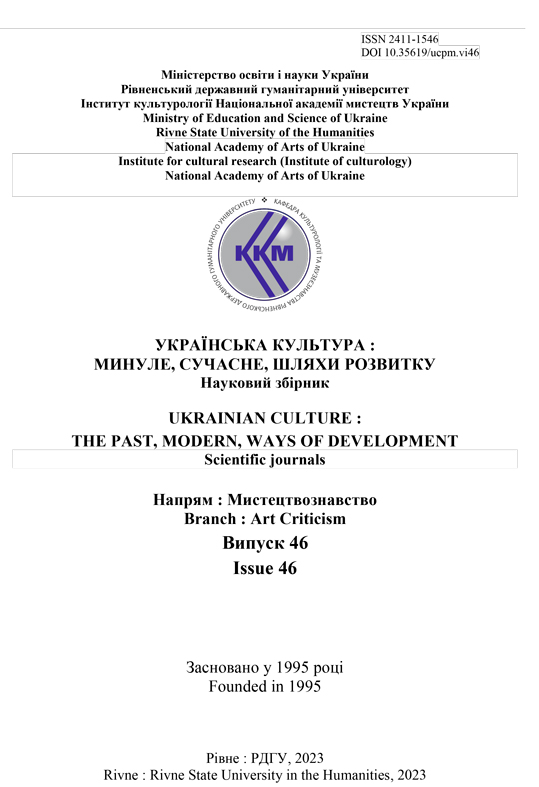NATIONAL AND POLITICAL MODIFICATION OF THE SACRED IN THE GRAFFITI OF THE TIMES RUSSIAN-UKRAINIAN WAR (2014-2023)
DOI:
https://doi.org/10.35619/ucpmk.v46i.707Keywords:
graffiti, mural, sacred, Russian-Ukrainian war.Abstract
The topicality of the topic is determined by the fact that, firstly, domestic graffiti remains a little-studied phenomenon, and secondly, its sacred component and its modifications during the modern war have not yet attracted the attention of researchers. Meanwhile, graffiti itself as the «art of the moment» instantly reacts to any events, and in these circumstances, it presents the people's reaction to those crimes that are currently being committed in the name of the triumph of the «russkimir».
The article analyzes some representative samples of graffiti with a sacred component, created in Ukraine from 2014 to 2023. All of them are made in a more or less outrageous style.
This is an anonymous Odesa graffiti depicting the Mother of God in a traditional Byzantine style and the inscription in Russian «Mother of God, banish Putin». The work underwent a series of transformations made by supporters and opponents of this appeal.
The Kyiv mural «Saint Javelin», created by graphic designer Ye. Shalashov, was also involved in the analysis.
The traditional Christian image of the Mother of God is combined here with the appearance of the latest weapons which she holds in her hands instead of Christ. The image caused a negative reaction from the Council of Churches, which also led to the modification of the image.
The work of the Italian artist Salvatore Benintende (TvBoy), located in Buchа, is an image of a girl with a nimbus around her head and a «Stop» sign in her hands. The halo around her head reminds of the innocent victims caused by Putin's Russia.
The Kyiv mural «Time of Changes» was created by the writer Volodymyr Manzhos. The picture represents the victory of the Ukrainian hero over the «Russian bear», from whose paws fall the symbols of the Soviet empire ‒ hammer and sickle. It is made in a grotesque style, with a violation of proportions and a shifted perspective. However, the irony here only shades the main pathos of the work, in which the Intercession of the Virgin is an ancient Byzantine iconographic attribute, combined with lines of Shevchenko's poetry. Both of these things appear in a single ideological and semantic space as symbols of traditional and new values of the Ukrainian people.
During the Russian-Ukrainian war, graffiti became a kind of monumental propaganda. At the same time, the sacred is additionally filled with a national-political component. Traditional Christian imagery is reinterpreted and modernized taking into account the historical context. The use of sacred images expands the symbolic interpretations of paintings, that can be performed even in an outrageous or ironic spirit, which violates the traditional canons of using the sacred in art.




